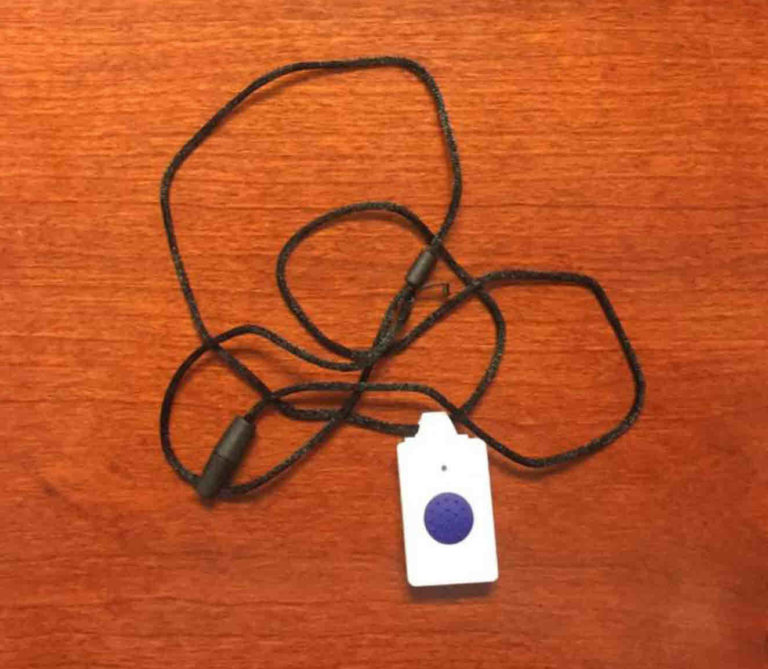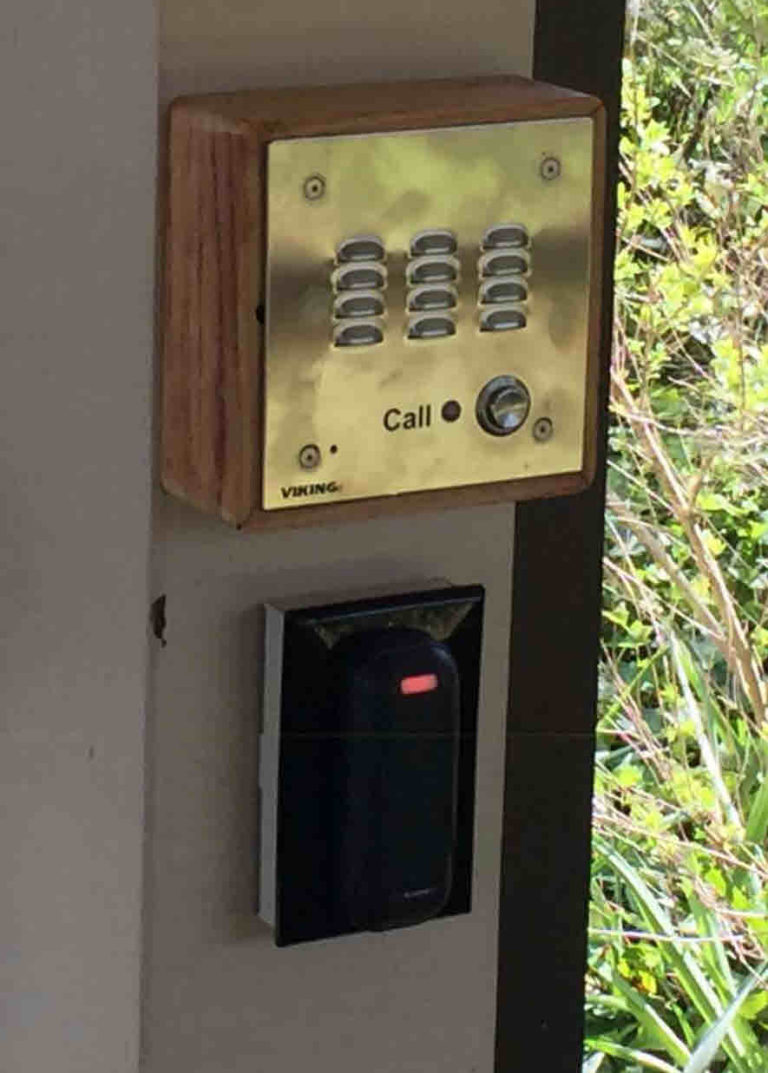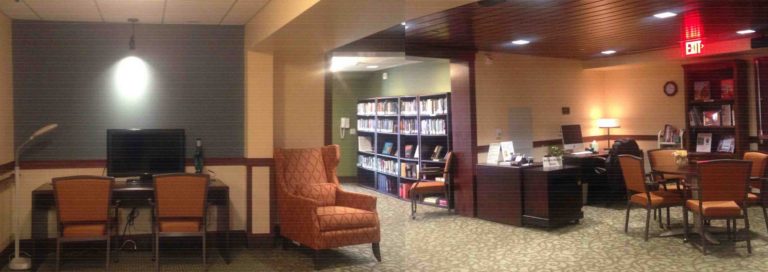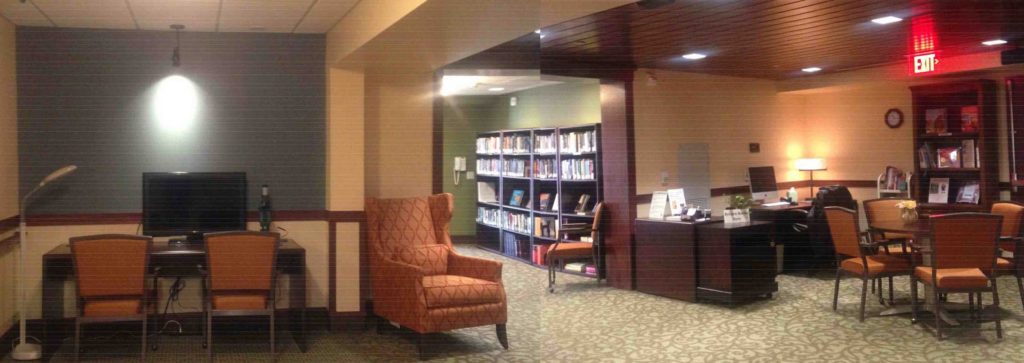In 2016, Information Technology (IT) under Manager Russell Pepe and his team of Brian Reily and Marc Gold prepared to bring state-of-the-art technology to Medford Leas to keep up with resident demand and current operational needs. In 1971, when the Community Building and Courtyard Apartments went up, there were only basic television and telephone service. TV was broadcast, no cable. No home computers.
Russell Pepe described the plan. Fiber optic cable would replace the aging copper wire, providing high-speed WiFi and wide bandwidth to handle much more data. This would result in many new services on the Medford campus:
- A new fire alarm system;
- New phone lines permitting caller ID, call forwarding and voice mail;
- WiFi (wireless) to all residents with reliable high-speed connections;
- Cameras in courts and parking lots, adding to security;
- Electronic medical records and pharmacy ordering and distribution.
The transformation had received a big boost in 2014 with construction on the Haddon and Estaugh medical buildings, where fiber-optic cable and a new telephone switch were introduced. By 2016, they already had wireless technology.
Fiber optic cable came next to the Courts, with each apartment wired for the Call-to-Aid system, allowing a resident to press a button in a wristband or on a pendant in an emergency. A new telephone system replaced the old one. WiFi was installed. Once work on the Courts was complete, Rushmore (built in 1984) and Bridlington (built in 1988) received similar changes and introductions. The Lumberton campus, built in 1999, was already up-to-date, with many residents having services from Comcast and Verizon.
Once work on the Courts was complete, Rushmore (built in 1984) and Bridlington (built in 1988) received similar changes and introductions. The Lumberton campus, built in 1999, was already up-to-date, with many residents having services from Comcast and Verizon.
Through 2017 and 2018 services continued to be rolled out and new ones added. Access control was installed on outside doors, with residents using an ID/POS (point-of-sale) card to enter, or, if needed, the Reception Desk remotely providing access. The new fire alarm system identified on a panel the exact location of a problem, alerting Maintenance and nurses. Community-wide email service was provided via a server offered by Google.
Rapidly changing technology has put the Reception Desk at the center of communication, record-keeping and security. By 2018, the receptionist managed three computer monitors, a point-of-sale (POS) register, involving resident service transactions, a Call-to-Aid panel, an iPad, and a fire panel. A computer had replaced the switchboard.
Through 2017 and 2018 services continued to be rolled out and new ones added. Access control was installed on outside doors, with residents using an ID/POS (point-of-sale) card to enter, or, if needed, the Reception Desk remotely providing access. The new fire alarm system identified on a panel the exact location of a problem, alerting Maintenance and nurses. Community-wide email service was provided via a server offered by Google.
Rapidly changing technology has put the Reception Desk at the center of communication, record-keeping and security. By 2018, the receptionist managed three computer monitors, a point-of-sale (POS) register, involving resident service transactions, a Call-to-Aid panel, an iPad, and a fire panel. A computer had replaced the switchboard.
In 2017, technology had become the tool of the librarian. With the new fiber-optic cable and internet connections, it was possible to use a software program for libraries, “Library Cat” (catalogue), discovered by resident Margaret Eysmans while working in the library of the Lois Forrest Nature Center. The software links all four libraries at Medford Leas — Medford campus main library, Nature Center library, Large Print Library, and the Lumberton campus library — and the Burlington County Library to the Medford Leas website. Residents Dave Bartram and Margaret Eysmans, technical advisors, set up the system and showed the librarians how to operate it. A user clicks on Library on the website, enters the title, author or subject of the desired book and will be told which library has the book. A user without a computer simply comes to the main library to do the same search on the library computer. The librarian’s job became additionally eased by being able to catalog an incoming book by scanning the book’s ISBN code. Said Jody Cardona, head of the main library on the Medford campus, “The system requires some work, but it saves work in the end. It’s necessary and advantageous.”
The Large Print Library, under Miriam Feyerherm, operates in the same way, but has additional technology to be responsive to varying visual challenges. A video magnifier with screen for greater enlargement was installed. And an iPad on a stand at eye level, with larger TV screen, allows a user to view material on the internet.
In all four Medford Leas libraries books and technology work amicably together.
The Large Print Library, under Miriam Feyerherm, operates in the same way, but has additional technology to be responsive to varying visual challenges. A video magnifier with screen for greater enlargement was installed. And an iPad on a stand at eye level, with larger TV screen, allows a user to view material on the internet. In all four Medford Leas libraries books and technology work amicably together.




